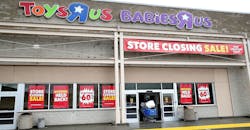Reshaping Logistics to Address Shifting Customer Expectations
The established but increasingly cumbersome logistics models of large enterprises are struggling to handle a new age of customer expectations. Many traditional 3PL providers cannot effectively manage these expectations either. And as inefficiencies persist, enterprises are looking for new ways to foster innovation and drive improvement across their supply chains without introducing excessive risk or adding costs. Along this front, on-demand warehousing and fulfillment models have proven effective in providing large businesses with an alternative distribution network that allows them to quickly respond to new industry trends, test demand in new markets, and deliver expedited shipping to customers.
Enterprise-Level Logistics Revolves Around Optimization
Although both small and large companies experience supply chain challenges, their struggles often arise out of different circumstances. That is, while small and mid-sized businesses are usually more concerned with the initial construction of their end-to-end supply chains, large enterprises tend to focus on maximizing the efficiency of the fulfillment and distribution channels they have already developed.
To exemplify this point, consider the case of Walmart, a retail industry behemoth with $500 billion+ in annual revenue, 4,700+ storefronts nationwide, and a long-established market presence. For an enterprise like Walmart, the emphasis is less on building their supply chain so much as it is on optimizing it. This focus on efficiency is what led Walmart to recently announce their next-day shipping service for e-commerce purchases. Although Walmart is already a global enterprise, they are always looking for ways to reach their customers faster and deliver an innovative buying experience. It is this type of optimization that is a top priority for many enterprise-level logistics departments today.
Size Can Limit Speed: Why Many Enterprises Struggle with Supply Chain Efficiency
While companies like Amazon and Walmart make it look easy, most enterprises know from experience that the process of optimizing a global supply chain represents a monumental hurdle. For companies like General Motors with 18,000+ partners in their global supply chain, entire teams of analysts and extensive funding are required to drive meaningful change. Building a modernized supply chain also requires a fundamental shift in the technologies and strategies used by enterprises for managing their logistics.
However, the level of investment and training needed to achieve this optimization on a global scale can take years to roll out. Furthermore, if the company culture at these enterprises are slow to accept change, it can be an even larger hurdle just to receive approval for a project of this magnitude. This reality is clearly recognized by enterprise executives today, with 56% of CIOs in a recent survey listing company culture, 50% listing cost, and 43% listing legacy technology as the three most significant barriers to their company’s digital transformation.
On-Demand Warehousing Gives Enterprises Innovation Without Adding Risk
Although the sheer size and financial strength of large enterprises may seem enough to remain competitive, the fate of companies like Sears and Toys-R-Us reminds us this is not the case. Instead, it is the rigidity of in-house procedures at these large companies that often proves to be their downfall. In an environment where constantly shifting customer preferences and lightning-quick e-commerce experiences have become the norm, enterprises are struggling to keep pace with smaller and more nimble businesses that can respond to market evolution at a faster pace. And as consumer preferences continue to shift, many enterprises are falling further behind.
In order for large enterprises to remain competitive, they need access to supply chain solutions that enable the same level of flexibility and innovation as is available to their smaller peers. They also need an environment that mitigates the risk of a new product or market strategy failing. While the risk aspect of innovation is ever-present, if a large enterprise invests millions or even billions in a failed venture, the resulting impact on revenue can be hugely damaging. Thus, gaining access to a “sandbox” where new ideas and ventures can be tested on a small scale before instituting them globally is a major plus. Enter in on-demand warehousing and fulfillment.
5 Enterprise Use Cases for On-Demand Warehousing
While the underlying need to foster innovation in a risk-reduced environment is what typically drives large enterprises to on-demand solutions, the specific application of such models can vary widely. While not every enterprise use case is documented here, the following list highlights several of the more prominent examples that Ware2Go has witnessed over the course of the past year.
- To Mitigate the Risk of Trade Conflict: On-demand warehousing allows businesses to quickly scale their inventory levels up or down to cope with sudden economic shifts or trade disruptions. This means that as impending trade conflicts are identified, businesses can quickly inbound additional inventory from their foreign suppliers and stock it in U.S.-based facilities with relative ease. This effectively allows domestic businesses to avoid future tariff hikes on imported goods, either until normal trade practices resume or new suppliers can be onboarded. And because on-demand warehousing does not require any long-term contracts or inventory minimums, domestic stock could be reduced immediately following the culmination of trade conflict without infringing upon any contractual warehousing parameters.
- To Account for Seasonal Fluctuations in Product Demand: Many businesses today have a recognizable “busy season,” such as the winter holidays, where as much as 30-40% of sales can occur in just 1-2 months. This means inventory needs are higher during the busy season than they are during low-demand months. However, traditional warehousing models often require year-round contracts and inventory minimums that force businesses to pay for warehousing space they don’t need. On-demand models address this problem by providing complete flexibility to scale inventory levels up or down as needed throughout the year. This allows businesses with seasonal demand to minimize their warehousing costs during non-busy months, and then rapidly increase inventory levels as-needed without paying excessively for it.
- To Test Expansion into a New Market or Industry Segment: For an enterprise interested in testing demand for a new product or in a new market, it is often less risky and more cost-effective to leverage an on-demand service as opposed to other warehousing and fulfillment options. Leveraging an on-demand solution in this circumstance allows the enterprise to probe consumer preferences in the new market before developing a more permanent supply chain infrastructure. This enables the enterprise to gather data, analyze customer interactions, and refine their approach before investing more heavily.
- To Accommodate Sudden Shifts in Customer Behavior: Often times, consumer preferences for new products shift faster than businesses can pivot to address demand. For instance, if a retailer recognizes a sudden spike in sales of ripped jeans, how can they quickly increase their stock of jeans to support demand without disrupting their established workflows? Do they have enough warehouse space to accommodate additional jeans, and can their warehousing and fulfillment structure handle the sudden uptick in demand? If not, businesses can leverage on-demand facilities to quickly get additional supplies of ripped jeans into the market until they can build out the internal infrastructure to support this customer shift.
- To Achieve 1-2-Day Shipping for Select E-commerce Orders: Many enterprises continue to struggle with fulfilling e-commerce orders faster than 3-5-days. But as the industry evolves, 3-5-day shipping is simply not fast enough. Today, 60%+ of today’s B2B buyers expect 1-2-day shipping. The expectations are similar for B2C. And while it might take years for an enterprise to achieve 1-2-day delivery across their entire supply chain, leveraging on-demand services in the interim period allows a business to offer streamlined shipping for their most in-demand products or high-profile clients so that top-notch customer satisfaction is maintained.
Next Steps
For any business interested in learning more about how on-demand warehousing could facilitate additional efficiency and innovation across their supply chain, we encourage you to reach out to Ware2Go for more information.

